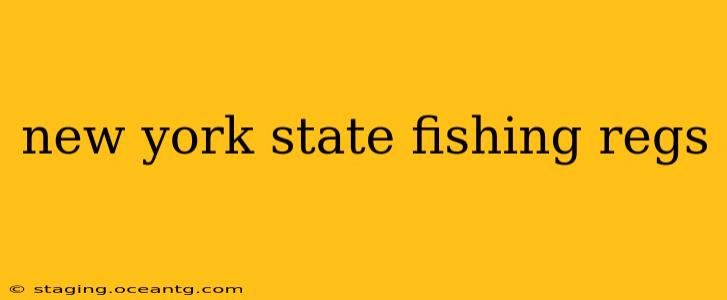Fishing in New York State offers incredible opportunities, from casting a line in the Adirondack lakes to battling a striped bass in the Atlantic. However, to ensure a successful and legal fishing trip, understanding New York's fishing regulations is crucial. This comprehensive guide breaks down the key aspects, answering frequently asked questions and providing essential information for both seasoned anglers and newcomers.
What is the New York State fishing license requirement?
A fishing license is required for anyone 16 years of age or older fishing in New York State waters. Licenses can be purchased online, at participating license agents (like sporting goods stores), or by phone. There are various license types available, including resident, non-resident, and short-term options, each with varying durations and privileges. Ensure you obtain the correct license type for your residency status and fishing needs. Failure to possess a valid license can result in significant fines.
What are the size and creel limits for different fish species in New York?
New York's size and creel limits vary considerably depending on the species and location. For instance, the creel limit for largemouth bass might be different in the Finger Lakes region compared to the Adirondacks, and minimum size limits are often in place to protect younger fish. The New York State Department of Environmental Conservation (NYSDEC) website provides detailed, up-to-date information on size and creel limits for all fish species. It’s crucial to consult this resource before your trip, as regulations change. Don't rely on outdated information; always check the official website for current regulations.
What are the seasons for fishing different species in NY?
Similar to size and creel limits, the open fishing season for various species varies across the state and by specific water bodies. Some species have year-round open seasons, while others have specific opening and closing dates designed to protect their spawning cycles. Again, the NYSDEC website is the definitive source for accurate season information. Planning your fishing trip with awareness of the open seasons will significantly increase your chances of a successful and legal fishing experience.
Are there any specific regulations for fishing in certain areas of NY?
Yes, absolutely. New York has many designated fishing areas with specific regulations. Some waters may have special restrictions, such as catch-and-release requirements for certain species, or limitations on the types of fishing gear allowed. Areas like national parks, wildlife sanctuaries, or specific lakes and rivers might have unique rules, often aimed at protecting sensitive ecosystems or endangered species. Always check the NYSDEC website for any special regulations pertaining to your chosen fishing location.
What are the penalties for violating New York's fishing regulations?
Violating New York's fishing regulations can result in substantial fines, license suspension, and even court appearances. The penalties can vary depending on the severity of the violation. It is far more cost-effective and responsible to ensure you fully understand and comply with all regulations before you head out fishing.
Where can I find more detailed information about New York fishing regulations?
The most reliable and up-to-date source for New York State fishing regulations is the official website of the New York State Department of Environmental Conservation (NYSDEC). This website provides comprehensive information on licenses, regulations, fishing areas, and much more. Make it your primary resource before, during, and after your fishing trips. Utilizing this official resource safeguards both your enjoyment of the sport and compliance with the law.
This guide provides a general overview. Always consult the NYSDEC website for the most accurate and current information on New York State fishing regulations. Responsible fishing practices are essential for preserving our natural resources and ensuring the sustainability of fishing for generations to come. Remember to practice Leave No Trace principles and respect the environment while enjoying your fishing experience.
